Paper based cat litter pellets also pose as a considerable health risk to degus, perhaps more so than wood pellets (not least because
several degu owners have observed their degus find them highly palatable). All equipment used is listed so you can try this experiment for yourself.
>Demonstration 1- Absorbency<
Paper pellets are designed to absorb moisture and retain it- basically they are made from compressed paper fibres. This demonstration illustrates
how absorbent they are, and what might happen to pellet matter inside a degu's stomach.
An identical procedure to the wood pellet demonstrations was used in these experiments. Again, an alfalfa pellet is used as the control, since it is
the same size and shape as a paper pellet and these are often found in degu feeds (therefore clearly safe to ingest). Pictured below is the
experimental setup, showing the paper pellet (right), alfalfa pellet (left) and a 1 ml syringe of water. Two one pence pieces are used to represent the
relative size of a degu's stomach, but any similar sized coin will do. These are placed on an absorbent sheet of kitchen paper.
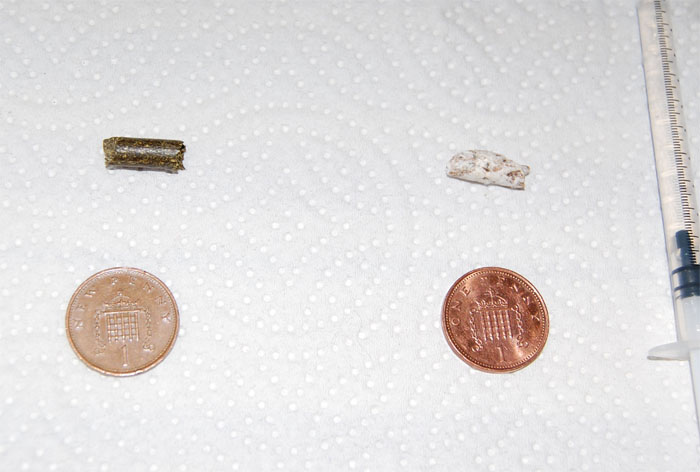
Next, each of the pellets is crushed and sprinkled on the top of the coin (see below). Crushing the pellets simulates what would pass into a degu's
stomach after chewing and ingestion.
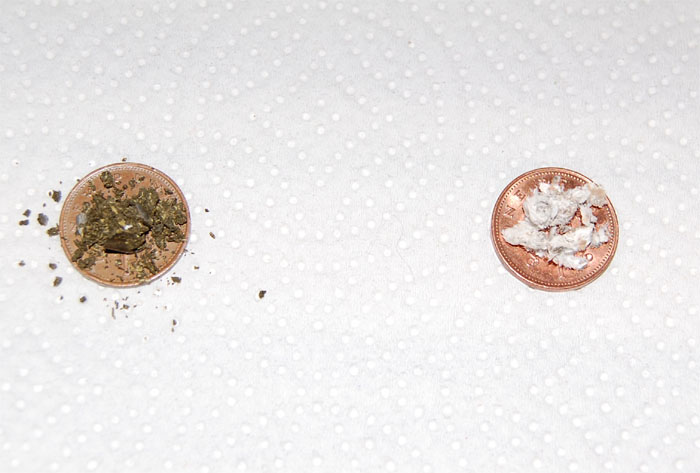
Now to each of the coins is added 0.5 ml water, dripped carefully from above. This quantity represents the fluid level inside a degu stomach.
You will see in the image below that the majority of water is not retained by the alfalfa pellet as it runs off the top of the coin and onto the kitchen
paper. In contrast, all the water is retained by the paper pellet as none of it runs onto the kitchen paper.
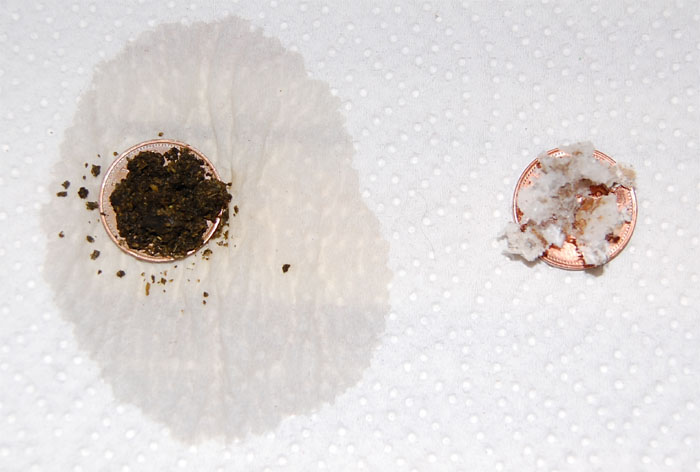
We can therefore conclude that paper pellets are much more absorbent than alfalfa pellets. We can speculate that the effect inside a degu stomach
will be similar to this, with a paper pellet absorbing the stomach fluid in a similar way. Remember that the stomach continually secretes fluid during
digestion.
>Demonstration 2- Expansion<
Paper pellets also expand on contact with moisture as the fibres increase in size and break apart when hydrated. This demonstration illustrates the
degree to which paper pellets expand, and what this would mean to pellet matter inside a degu's stomach.
Again, an alfalfa pellet is used as a control. Pictured below is the experimental setup, with paper pellet (right) and alfalfa pellet (left). Also pictured are
two small bottle caps to hold a small quantity of water (2 ml each).
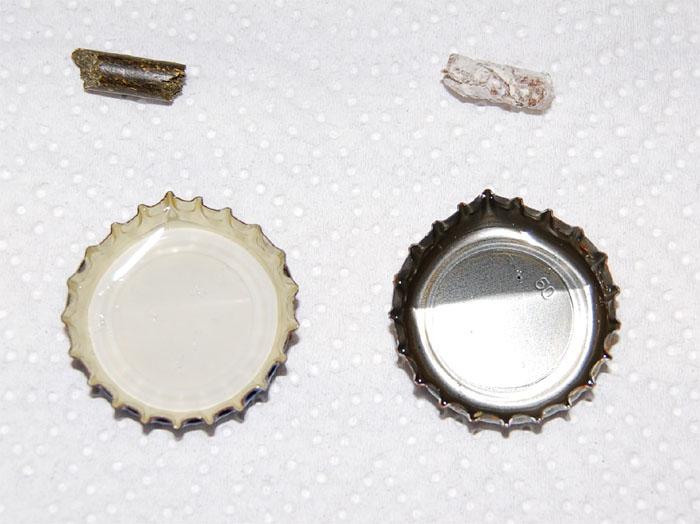
Next, each pellet is added to the 'bath' of water; The image below shows the setup immediately after adding the pellets. You can see that after only
one or two seconds the paper pellet has already begun expanding.
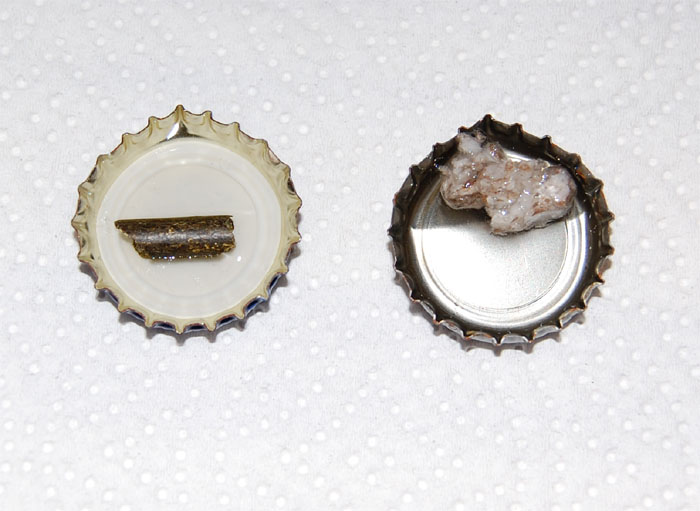
After only 30 seconds, the paper pellet has further expanded and taken up more moisture (see below). The alfalfa pellet remains intact.
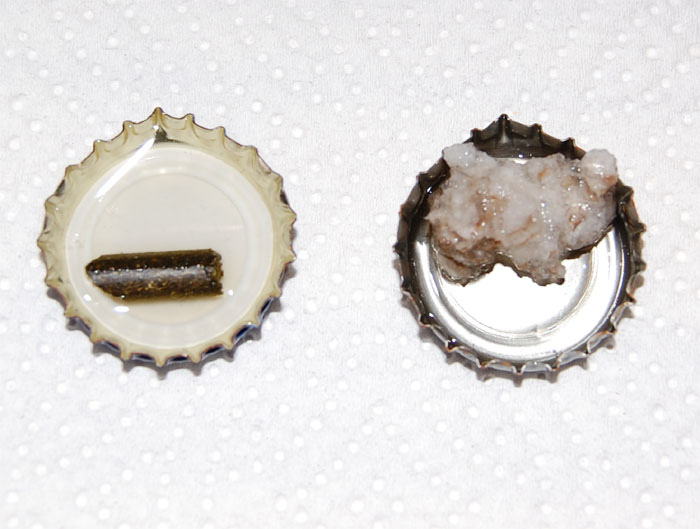
After less than 5 minutes, the paper pellet has increased in size dramatically (see below), while the alfalfa pellet still appears relatively intact.
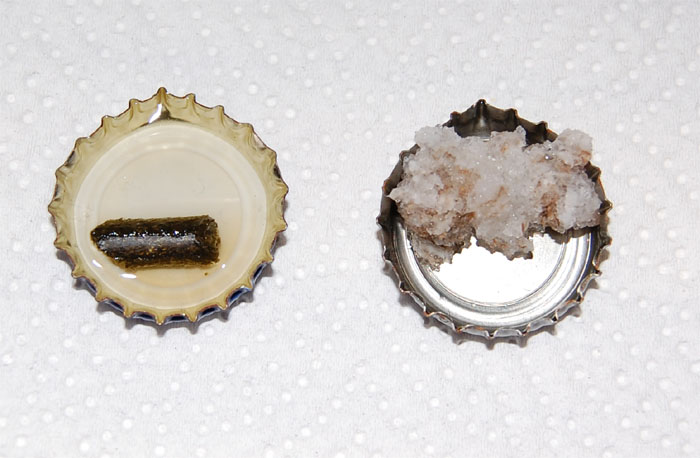
Time lapse images of the two pellets taken at the start and <5 minutes in to the experiment detail just how each pellet has changed on contact with the
liquid (below):
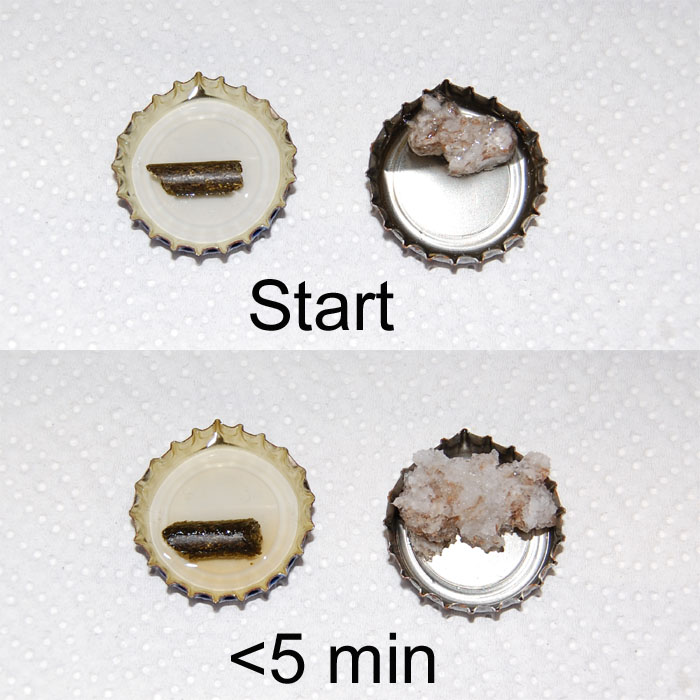
We can therefore conclude that paper pellets expand a lot more, and faster, than alfalfa pellets on contact with liquid. Note that the expansion time was
even quicker for paper pellets than for the wood pellets. This may have severe consequences for a degu ingesting a paper pellet, as the
expansion is rapid enough to occur inside the stomach before the pellet can be passed through into the intestines and later excreted. While a degu
stomach can stretch to a certain degree, this type of expansion could easily lead to stomach rupture, which would be fatal for the degu. It may also
cause other problems such as constipation and/or intestinal blockage.
>Demonstration 3- Breakdown<
By nature, fibre is not completely broken down during digestion and as it it, fibre is an essential element to every degu's diet as it helps keep the
intestines in good working order, just as it does in humans. However, fibre needs to be broken down to some extent inside the degu's digestive
system in order to prevent intestinal blockage, which could be very dangerous for the degu. Here we test how well paper pellets break down as they
might be during digestion.
As before, an alfalfa pellet is used as a control. Pictured below is the experimental setup, with paper pellet (left), alfalfa pellet (right) and two glass
vessels, each holding 10 ml of liquid (5 ml water, 5 ml vinegar) which simulates a slightly acidic environment similar to that found in the stomach.
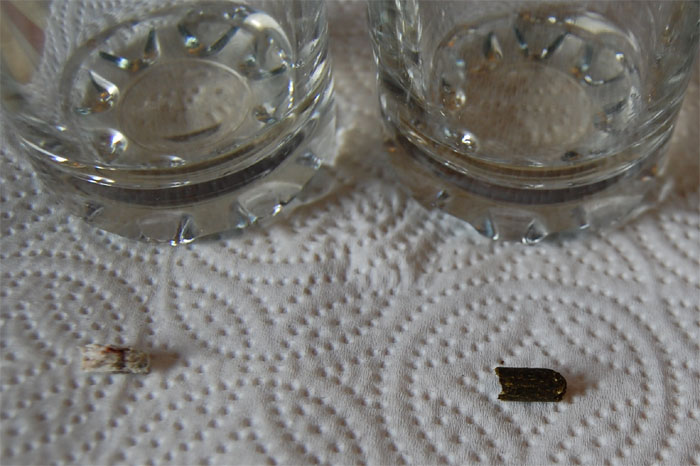
Next, each pellet is added to the liquid. The image below shows the pellets immediately after being placed in the vessels.
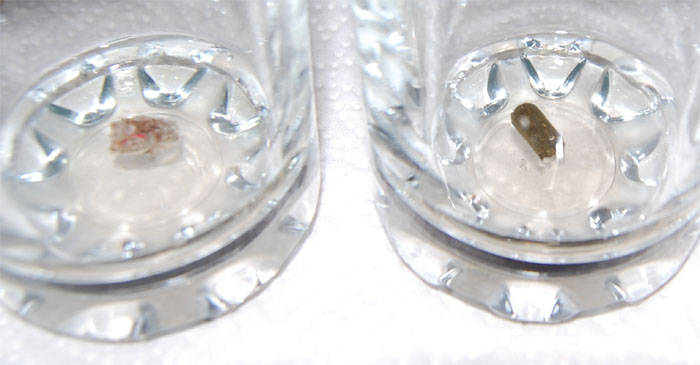
Now the pellets are agitated thoroughly for 5 minutes, then left to sit in the bath for 12 hours before being vigorously agitated again. This simulates
how food is processed and stored in the stomach before passing through to the intestines. After several hours the vessels now look like this:
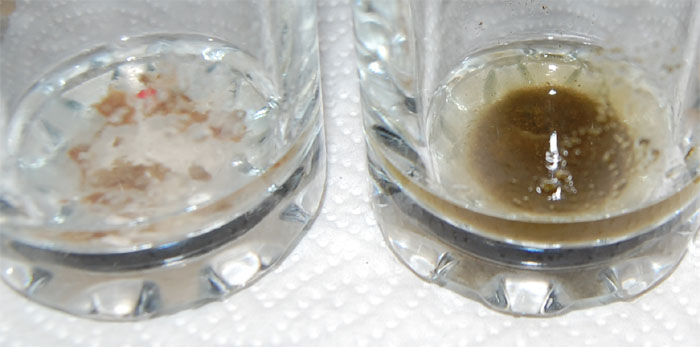
Next, we need to see how much the remaining matter has broken down. To do this, we filter off the liquid from the vessels and leave the remaining
fibre to dry for a few hours. Here's what we have left over:
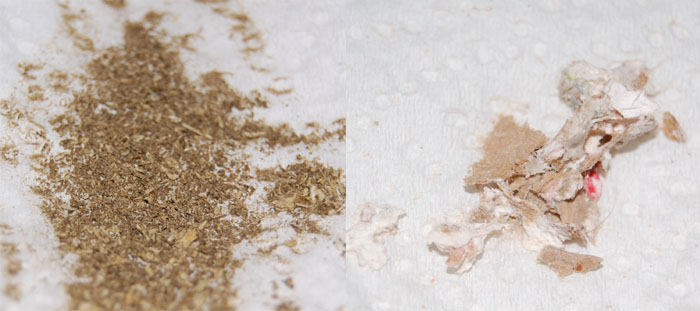
The picture on the left is the remains of the alfalfa pellet. You can see the fibre has completely broken down into tiny particles. On the right, the
remains of the paper pellet can be seen. Clearly shown are the large bits of paper fibres left intact by the process. It is these larger particles that
risk becoming lodged and packing inside the intestines on the way through the degu body. In conclusion, the paper pellet poses more risk of
causing intestinal blockage than the alfalfa pellet, and perhaps poses even more of a risk than the wood pellet.












